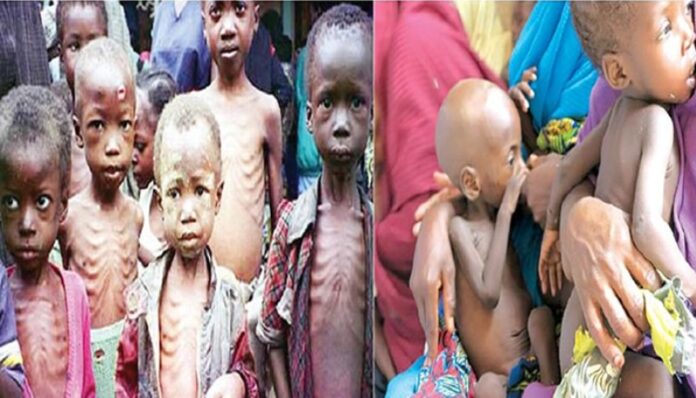A new report the United Nations Children’s Fund (UNICEF) has revealed that Nigeria has an estimated two million children suffering from severe acute malnutrition (SAM).
The UN agency disclosed this in a statement posted on its website.
It stated that malnutrition is a direct or underlying cause of 45 per cent of all deaths of under-five children.
“Nigeria has the second highest burden of stunted children in the world, with a national prevalence rate of 32 per cent of children under five.
“An estimated two million children in Nigeria suffer from SAM, but only two out of every 10 children affected is currently reached with treatment.
“Seven per cent of women of childbearing age also suffer from acute malnutrition,” UNICEF said.
The agency further said exclusive breastfeeding rates “have not improved significantly over the past decade, with only 17 percent of babies being exclusively breastfed during their first six months of life.”
It added: “Just 18 per cent of children aged 6-23 months are fed the minimum acceptable diet.
Furthermore, UNICEF said states in northern Nigeria are the most affected by the two forms of malnutrition – stunting and wasting.
UNICEF said high rates of malnutrition pose significant public health and development challenges for Nigeria.
“Stunting, in addition to an increased risk of death, is also linked to poor cognitive development, a lowered performance in education and low productivity in adulthood – all contributing to economic losses estimated to account for as much as 11 percent of gross domestic product (GDP),” it added.
To address the SAM challenge, the UN agency said “we aim to ensure that women, children and adolescents, particularly in vulnerable and deprived areas, benefit from increased access to and use of quality services and information to prevent and treat malnutrition, including in emergencies.
It called on the Nigerian authorities to strengthen health and community systems and fully integrate nutrition into all aspects of the primary health care system.
It also made a case for the implementation of the National Plan of Action on Food and Nutrition, a shift from emergency to development with long-term nutrition interventions that address stunting and severe acute malnutrition, respond to geographical differences by supporting service delivery in the north and humanitarian situations, and policy advice at state and federal levels as well as align and converge with other sector interventions.






















































